Tokaido Diary
Notes from a trip to Japan taken January 20-30, 2025.
There is a board game we play called Tokaido. In the game, you follow the old Tokaido road from Kyoto to Edo (today’s Tokyo). Along the way you stop at temples, bathe at the onsen, take in the views, meet people, buy souvenirs, and eat as many different dishes as possible. When we decided to go to Japan, my first thought was, why not make it a bit like the game? And so we worked our way on a similar route, stopping at a few of the 53 stations of the Tokaido.
Kyoto: the start of the road
Monday, Jan 20
It is night-time already when you settle into your Airbnb in Gion. Taking to the streets in search of food at nearly 11:00, you find a hole-in-the-wall serving soba noodles. You are stunned at how hot and how good they are, as you watch the cook from your stool at the bar, surrounded by the steam rising from his small kitchen and the sound of slurping from the other customers. In your bed later, as you drift off, you ruminate on the little differences you saw in the hours leading up to this: the old-fashioned taxi with a door that opened for you automatically, the toilet with a dozen buttons and a pre-warmed seat, the sleekness of the train, with seats that turned to face the direction of travel….
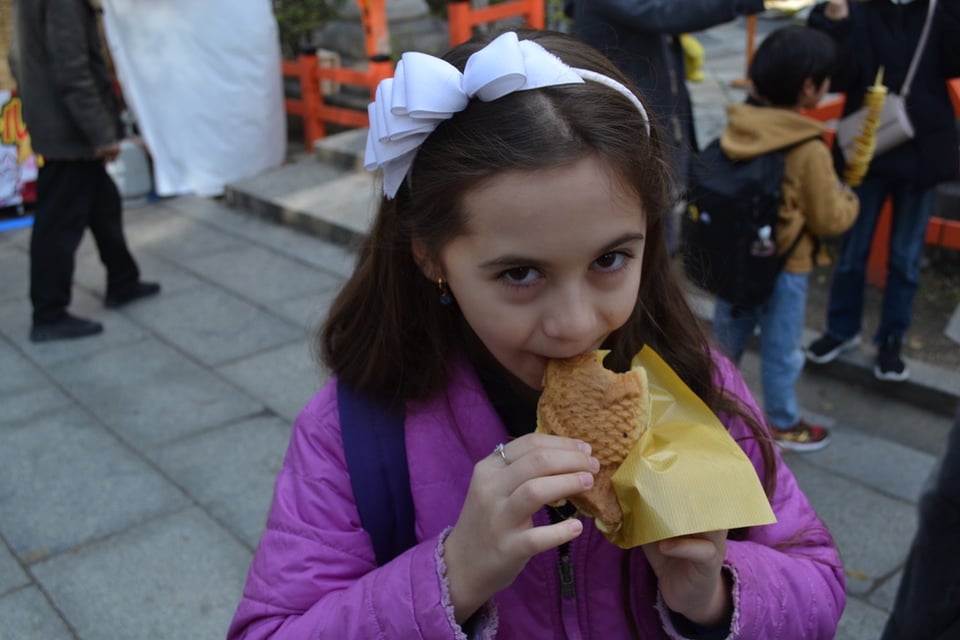
Tuesday, Jan 21
In the morning you go out in search of coffee and breakfast. The long east-west street that ends at Yasaka Shrine is full of shops and restaurants just opening. The weather is cold but sunny. After a breakfast of spongey pastries shapes like fish, among other things, you return to the same street for a look at the stationery shops and then have a lunch of tempura, unagi-don and miso soup. You follow the route of a walking tour in your guidebook, from Yasaka Shrine — all red Torii gates and food stands — up to the hill-streets Ninenzaka and Sannenzaka, packed with tourists but lined with beautiful old wooden buildings. Sannenzaka is an image you had seen repeatedly, and now by chance you find yourself climbing up it. The walk ends at Kiyomizu Temple, which is built on stilts and surrounded by forest. The temple complex is massive, and in the end you come to the temple itself. Taking off your shoes, you climb onto the platform leading to the altar. A few people sit before a metal bowl as big as a person and hit it with a padded stick. It lets out a deep but quiet sound, like a muffled gong. There is a smell in the air which you are fairly certain is myrrh. You get your “omikuji” fortune, obtained by shaking an octagonal box until a stick with a number protrudes from a hole. The man at the kiosk hands you the corresponding fortune. Luckily it is a blessing, not a curse. The sound of the bowl, the clacking of the boxes, the smell of myrrh all combine into a single sensation which you can only identify as mystical. The sun sets and you walk back the way you came. Right at the end of your street, you have a meal of sushi at a restaurant run by an older couple. It is the best tuna nigiri and “uni” you have ever tasted. Your younger traveling companion has a couple of maki rolls. Your traveling partner and you have a glass of sake each, overflowing into a square dish that you drain into your glasses later. The sushi chef asks where you are from, and when you tell him the name of the city, he nods and says, “Ichiro.”
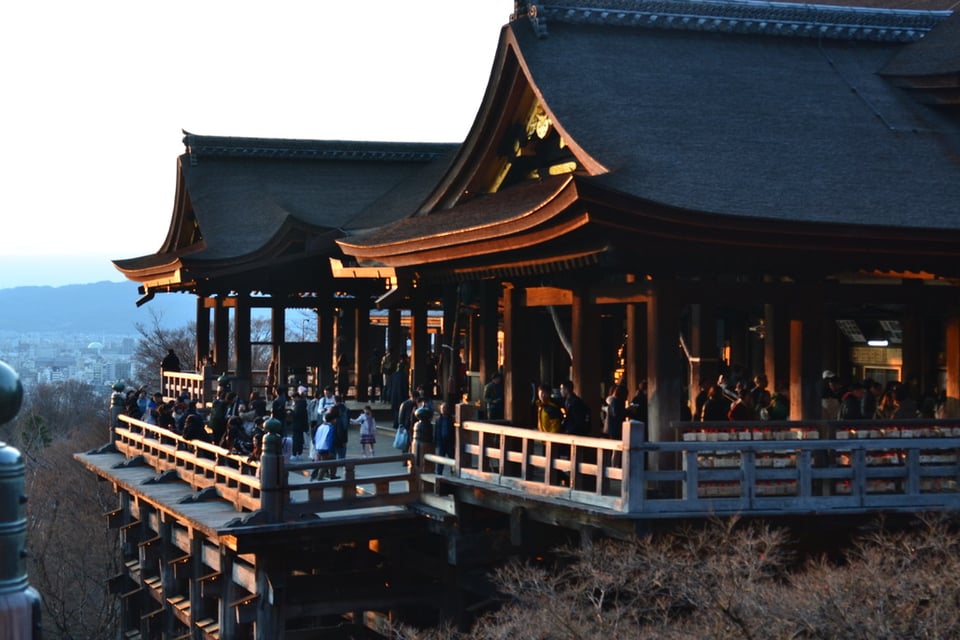
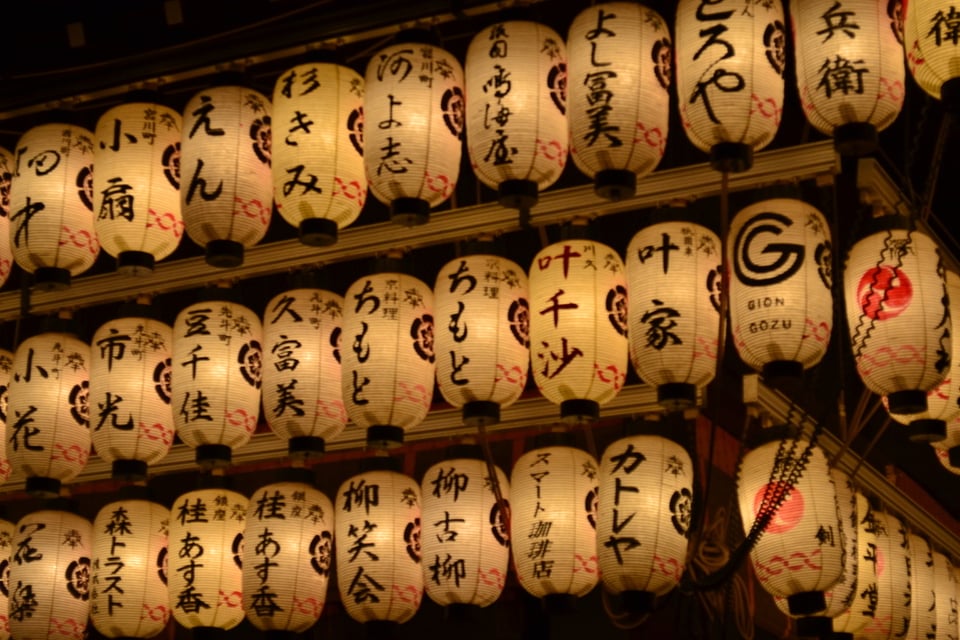
Wednesday, Jan 22
At noon the next day you take a train to Arashiyama Bamboo Forest—not so much a forest as a series of walking paths. In the village, before you begin your walk, you have a lunch of udon noodles. In the bamboo grove, everything is planted and placed and contained. Each stalk is the same height and width, and all were kept back from the path by a fence, also of bamboo. The corridor is a striking green and entirely vertical, so that the eye does not trace side-to-side at all. From there you take a taxi to the Golden Pavilion, Kinkaku-ji. A single temple building, covered in gold-leaf, set upon a pond or small lake, with water so still that the image of the temple is doubled in it. Every rock and tree in the lake seems part of a landscaper’s plan. The grounds are extensive, but nothing is “natural” per se. At sunset, you return home and then eat a Korean meal at another restaurant in your small alley.

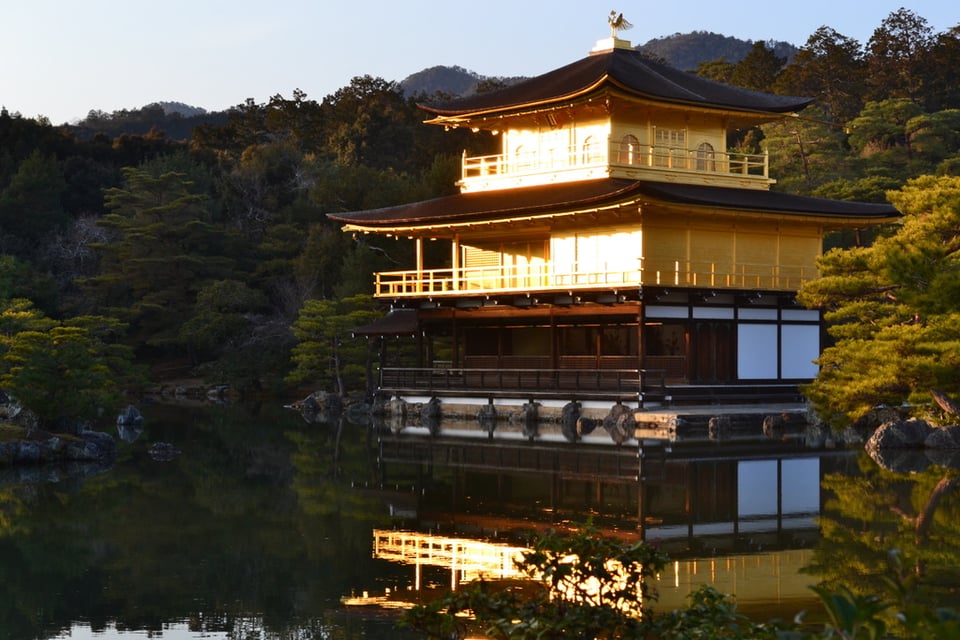
Thursday, Jan 23
You are intrigued by a “Philosopher’s Walk” in your guidebook, and so you start the day with a walk along the river — not the Kamo River but a smaller canal at the far east of Kyoto. You grab a hum bao from a food stall and meander down the riverside through one of the nicest neighborhoods you have ever seen. (You turn to your traveling partner and tell her you should both retire there some day.) The houses are multi-storied, with traditional Japanese roofs and tall fences. The city ends there and the mountains begin abruptly, so it is very private, and the only other people around are walkers like yourself. The route ends at Nanzen-ji Temple. It is built on the largest wooden pillars you have ever seen, each made from an entire tree. The space between the gate and the temple itself provdes a dramatic entrance and first view (although you have entered it backwards). That afternoon, you visit Tofuku-ji Temple, which has incredible grounds, but the Zen garden you most wanted to see has already closed by the time you get there. The temple’s ceiling of a dragon in black, gray and white looks like he is holding a crystal ball (or the sun?) in one claw. The place you know best from pictures is the red Torii gates of the Fushimi Inari Shrine, just ten minutes walk through another neighborhood—more modern and modest but each home remarkable for its economic use of space — tiny garages exactly big enough for a car, etc. At the Inari Shrine, you expected to see about 20 of these reddish-orange (vermillion?) gates, but instead there are hundreds of them, each with kanji carved into them and painted black. There are also fox statues wearing cloth bibs everywhere. Despite the many visitors (almost 100% Japanese), it has the feeling of a place where animist spirits might still haunt.


Nagoya: station 40 of the Tokaido road
Friday, Jan 24
In the morning, you set off for Nagoya on the bullet train. You stop just long enough to leave your bags in your hotel before continuing on to Ghibli Park. This is the leg of the journey your younger traveling companion has looked most forward to and the one you have worried most about the logistics of — the tickets you had to buy months in advance, the hotel for one night, a train, a subway and a monorail. As you ride the monorail (Linimo), at last nearing your destination, you admire its wonderful system of geometric, colored symbols used to represent each station, like something from one of the puzzles in Myst. Upon arrival, you are taken into a warehouse full of recreations from the films you have watched. You step into a few: the newspaper room from “From Up on Poppy Hill,” a giant jar that makes you feel tiny from “Arriety.” There is also an exhibit of stills of all the food eaten in the two-dozen Ghibli films, with a 3-D model of each meal under each one, and you remember how these movies always make you hungry. Leaving the warehouse, you take a forest path to the house from “Totoro,” which seems to be a traditional Japanese house transplanted here. As you enter, a woman tells you that you cannot take photos, but feel free to touch everything, and so you do. You open the drawers of desks and cabinets, every item seeming to belong perfectly to the world of the film. As the day wanes, you follow the forest path again to the Valley of Witches, with more houses you can enter. You see Kiki’s bakery but cannot find the stairs to her bedroom overhead. The last place you enter is the best of all, the house-machine from “Howl’s Moving Castle,” a labyrinth of rooms full of magical items and costumes, complete with a dial that, when turned, changes what you see out the window. As you leave the park, you lament that you never made it to to the Cat Bureau from “The Cat Returns,” but your younger traveling companion seems utterly happy.


Hakone: station 10 of the Tokaido road
Saturday & Sunday, Jan 25-26
You leave Nagoya in the morning on a train to Hakone Onsen. After reaching the town, you board a bus into the mountains, to Kinokuniya Ryokan. The place is 300 years old, and the bedraggled red carpets look like they are at least 50. Everyone working at the inn is old, too. You are given bamboo sandals at the door plus “yukata” (a cotton kimono) to change into. You make for the public baths as soon as you finish a bento lunch in your room. The room itself is spacious with tatami mats on the floor and three separate futons in a row. Etiquette at the onsen is that everyone is naked (men and women are separate, of course). There are washing stations around teh perimeter of the indoor bath and then a rectangular pool with a strong smell of sulphur. After a bit, you go outdoors. The air is frigid (it was snowing when you arrived) but there is a shallow pool enclosed in rocks, with a tiled bottom and a pipe bringing water from the hot spring. You visit this pool several times, both day and night. At night it is best, with a view of the stars above. You have begun a book of Basho’s haiku, and so, in that spirit, you compose a few of your own:
Belt of Orion
between boughs of ragged pines—
steam on the water.
*
A pool surrounded
by scores of volcanic rocks—
the smell of sulphur.
*
Venus, Mars, Great Bear—
trees here remind me of home
across the ocean.
There is also a private bath that you go to as a group with your companions one night. It is in an out-building of the inn, across a road. You are led to the door and trhen left for half-an-hour. You leave your yukata in the changing area and climb into two square, wooden tubs, recessed below the floor. The building is ramshackle, and the floor seems like it may have been wet for decades. There are no smells of mildew or anything but sulphur and wood. The room with the tubs is dimly lit — the kind of room that will lurk in the subconcious. You have gone for a peaceful soak, but your younger companion thinks it is a good place to splash and make noise since you are alone.


Your meals are Japanese kaiseki, which contains many delicacies, combined artfully, presented meticulously. You eat the sashimi, the miso soup, the lobster, and vegetables you don’t know the names of — but the sea whelk is simply too strange. Breakfast includes a bowl of rice and a raw egg to pour over it, plus a piece of cooked codfish.
Your second day, you set off on your own to Lake Ashi, only 20 minutes by bus. It is a perfectly clear day, and you are hoping to get a view of Mt. Fuji over the lake. When you arrive, though, there is no mountain to be seen. There is a torii gate in the water and a path along the lake lit by lamps, leading to a steep stairway to a Shinto shrine. You watch people come and go, bowing and clapping to awaken the kami at the shrine. A young Shinto priest is at work in one of the side-chapels. As you walk back, you are struck by how familiar the whole scene is. There is a variety of redwood endemic to the area. the ferry terminal and small town around it remind you vaguely of the Kingston Ferry back home. You leave just as the sun is setting. When you return, right outside the door of your ryokan, you also discover a shrine and a collect a “goshuin” — a paper stamped in red ink with a bit of calligraphy done by a monk overtop of it. You think about how many people have come to Hakone, and to this particular spring for 300 years or more. You aren’t sure if it is the waters themselves or the atmosphere in general, but you feel refreshed and rejuvenated in a way you cannot recall feeling.
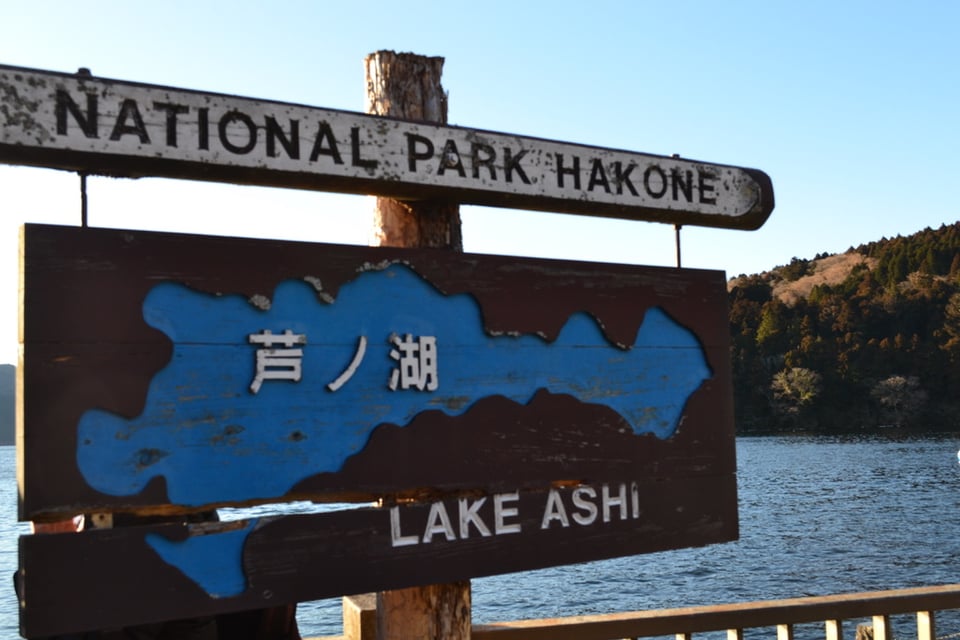
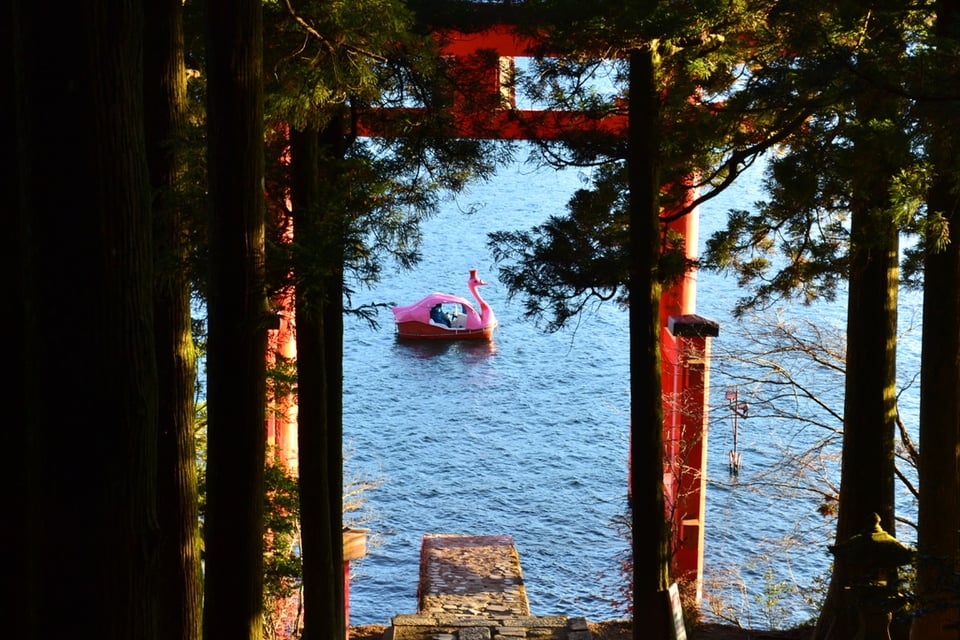
Tokyo: the end of the road
Monday, Jan 27
You arrive in Tokyo early afternoon, leave your things in a hotel near Hanzoman station and go to meet a friend’s friends from 25 years ago. You meet in Asakusa, which is a good first glimpse of Tokyo, you think. You come up a long street of food stalls and gift shops, with your newfound friends and guides, leading to Senso-ji Temple, eating dango—balls of rice on a skewer, coated in a sweet soy sauce—along the way. From here, you pass a gate with the largest Chinese lantern you’ve ever seen to a courtyard where you burn incense in a massive metal urn, where you see other people drawing the smoke into their hair. And then up a flight of steps to the temple itself, where you make an offering of a coin, bow and clap. Leaving the complex, you pass a five-storey tall pagoda and then enter an arcade full of more shops. Your younger companion finally finds the Japanese pencil case she has been dreaming about. You play a game where you try to catch goldfish with a very tricky net. You catch three and give them to your new friend’s daughter. You come to a beer street, where you are taken into a tight and unpromising place, which has a larger room hidden in the back, where you sit at low tables and cook Osaka specialty “okonomiyaki” — a sort of cabbage pancake — on your own grill, plus oysters, squid and noodles, with big glasses of beer. Being here with friends-of-a-close-friend feels strangely familiar. Afterward, you go out to karaoke together. Your younger companion belts out “Let it Go,” your traveling partner sings “Downtown,” and you round it off with songs by David Bowie and Kate Bush. You listen to your new friend singing Japanese songs, and he tells you that one is a song from Okinawa. You mention that your mother lived there as a child, and one of the party responds with a guttural “Eeehhh” sound that the Japanese use to express surprise. You are in a different world than Hakone but every bit as good.

Tuesday/Wednesday/Thursday, Jan 28-30
The next day, you have an early lunch of soba and tempura after sending a card from the post office. You watch people on their lunch-break come and go, no one lingering long. You take the Z-line to Shibuya, getting out at Hachinko Square. The screens over the scramble crossing are immense and continuously play in the background. Your companions want to see a shop, and you go off in search of Japanese blue jeans — one of two things (along with Japanese whisky) you hoped to bring home. Away from the scramble, there are gentle hills and narrow streets that reveal a much older city than the surface would suggest. Back together, you walk to Harajuku to see the “kawaii” people in costume. You spot a few in the alley called Takeshitadori, including one with a tail protruding from under a cape, so that you momentarily wonder if it is not a real fox, like you find in Japanese folk tales. The next day, you go farther north, to Shinjuku and Takadanobaba, where you spend an hour at an old video game arcade like the one in “Lost in Translation.” Two days in a row you finish the day with sushi at a restaurant inside a mall in Shibuya, which, surprisingly, is every bit as authentic as the ones you find on the street. You have the best unagi nigiri you have ever tasted.
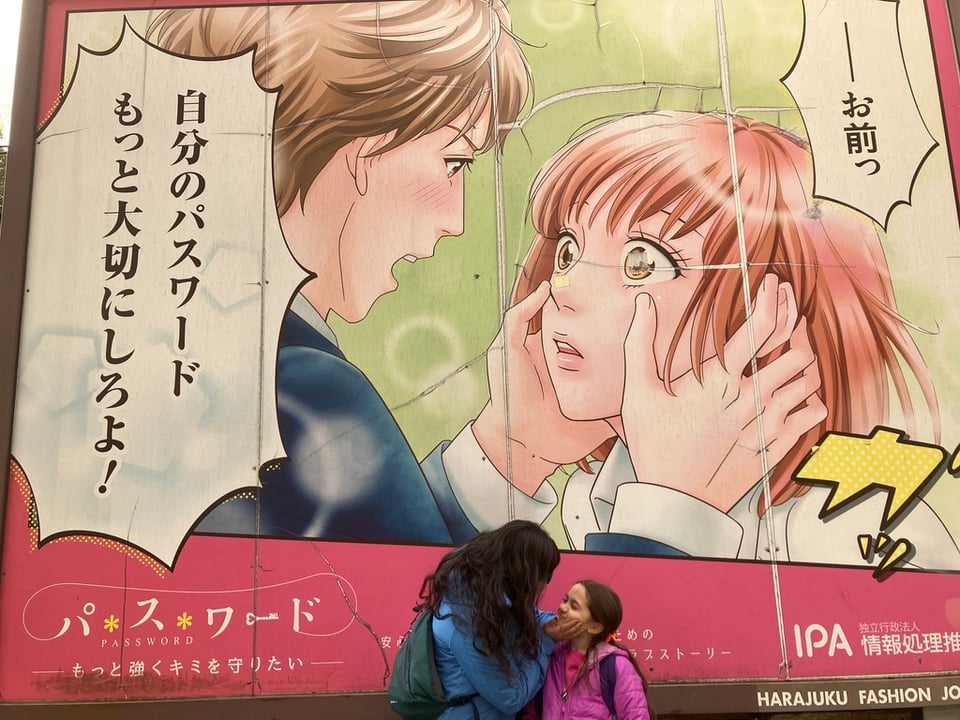
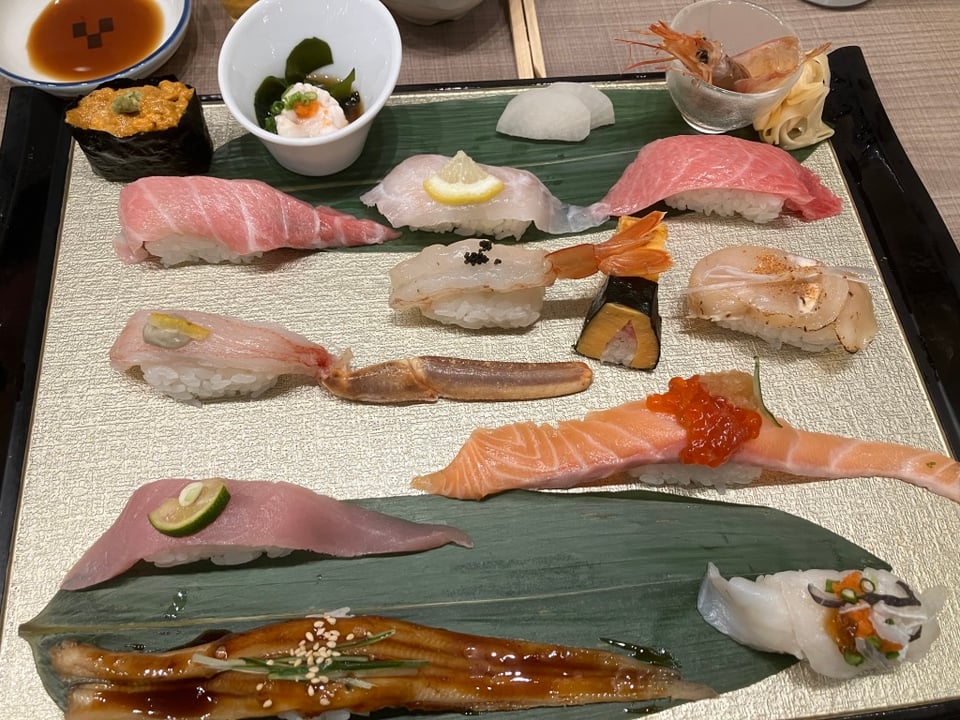
Wednesday morning, however, is inspired by Chris Marker. You have always wanted to see the Gotokuji cat temple from the movie “Sunless,” and so you take a local train to a quiet neighborhood in one of the western suburbs. You are not the only traveler who has come here, and when you find the temple, you see a line of people lining up to buy a “maneki neko” figurine — the cat with the raised paw — to place on the shelves in the garden surrounding the temple with thousands of others, in all sizes, that have already been placed there. In the film, an old couple prays for their cat that was lost, and I wonder if people are leaving the figurines for similar purposes. My younger companion buys herself a maneki neko, and she insists that her journey is now complete.
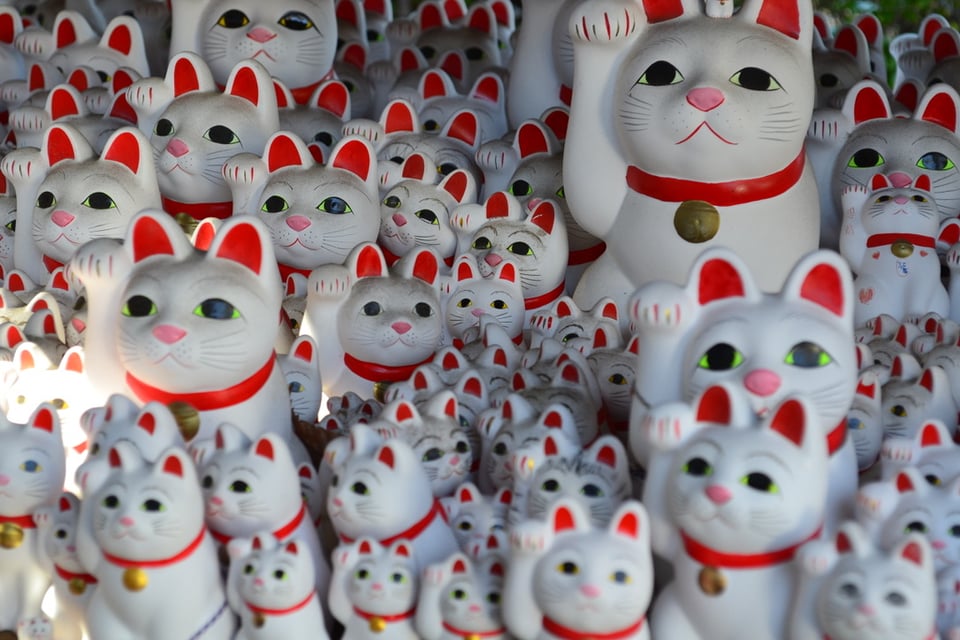
And that is where your journey ends as well. There is the rest of the afternoon and the evening, of course, but we have already covered that. You realize you have only scratched the surface of Tokyo. You never found your grandparents’ address in Roppongi from when they lived here. No Ginza except a few minutes above ground when changing subway lines. No day-trip to Yokohama. No trip to Nara when you were in Kyoto. And then there is Hokkaido island, and Hiroshima, and on and on. The one thing that really feels incomplete for this trip — for clearly there will have to be other visits — is that you never saw Mt. Fuji. And then, just as you lift off and the plane circles before heading west, right out the window, there it is! As clear as day, as fitting an end as you can imagine.